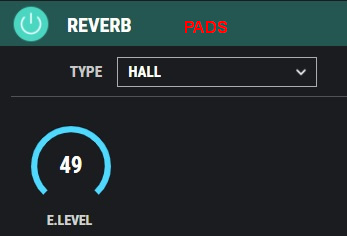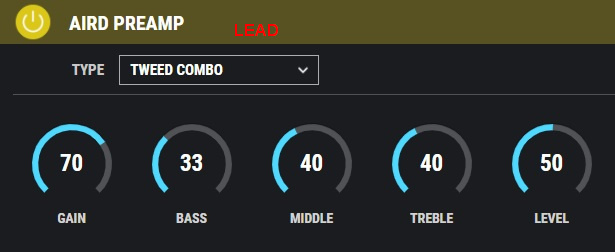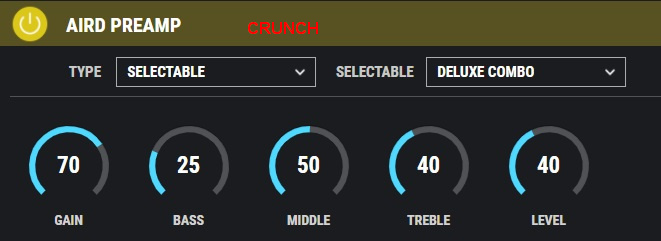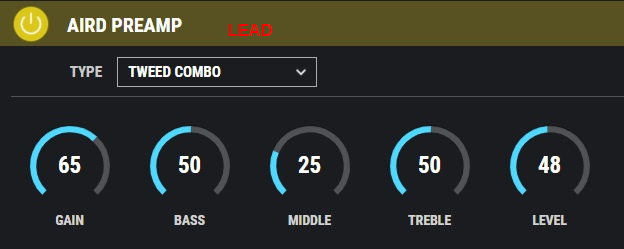My Boss ME-90
Introduction
So as usual, I upgraded from the Boss ME-80 to the ME-90. I tend to like to stay on the cutting edge of Boss multi-effects. When I learned that the new ME-90 had the same AIRD amplifier models as the GT line, I was convinced that I should upgrade. Spoiler alert: I was not disappointed.
See below for patches
and examples.
Aesthetics
The first thing I liked about the new ME-90 is that the LEDs are color coded! I cannot recall all the things the colors represent, but nonetheless, it's a good touch! It helps to underscore patch changes and parameter changes. I like this a lot!
I am also thankful for the second level of stomps that allow me to turn the Reverb, EQ, and Amp sections on and off. As well, the CTL pedal expands all the patches in memory mode by allowing certain parameters or sections to be modified or enabled.
One of my only complaints is that there
doesn't seem to be enough height to the second row of pedals
(such as CTL). For instance, when I am holding down on the
fourth one to go into the tuner, I am worried or concerned that
I will step on a knob behind it. I tend to play in
churches, so I tend to wear dress shoes.
Amp Models
Like I hinted at, the amp models were what I wanted. I had been using the ME-80 for a while now. The amp model was not as organic, but it was passable. The ME-90 took this in a radically new and better direction with amp models! The Twin Combo simulates a Twin Reverb. As someone who owned a 1972 Fender Twin Reverb, I can vouch for the realism! I love playing through this model for extended periods of time. Other good amp models are the Tweed Combo, which simulates a Fender Bassman; Diamond, which simulates a Vox AC30; JC-120, which simulates a Roland JC-120; and Deluxe Combo, which simulates a Fender Deluxe Reverb. Note that on most the sections of the ME-90, there's the "selectable" option, which means you must configure it using the phone app or desktop software. Overall, all the models sound very realistic to me, and accurate, so I'm very impressed!
Overdrive/Distortion
As usual, my favorite is the Blues Driver. My ears have always preferred the Boss Blues Driver BD-2, so I'm very happy with this setting. Boss brought back the Tube Screamer setting that was on the Boss ME-50, and it sounds like a faithful recreation of the Tube Screamer. The Boss ME-90 also includes a good Turbo Overdrive ("Turbo OD") for solo work. The MT-2 Metal Zone simulation, Metal DS, that sounds excellent in front of the amp section models that simulate clean amps. This section is rather nice, and the software also allows yet more selectable effects.
Modulation Section
As usual, the Boss ME-90 has the typical
array of modulation effects. One new addition is a stereo
chorus, which is in the selectable options. This is going
to be very effective at churches where I have left and right
channels. One of my favorite modulations is the Overtone
setting: I tend to dial up the high frequencies and reduce the
lower frequencies. When I play church pads, I mostly run
one chorus and two reverbs.
Delay Section
The analog section is great. I like
all the options, though, and I like being able to add reverb or
delay. I don't use Tera Echo often though.
Firmware Upgrade
When I first got the unit in the mail, it had the original first edition firmware, so I needed to upgrade it. I followed the instructions and it worked flawlessly.
AIRD
So far, I have been unable to get AIRD to work on the software or the phone app. I've noticed that there are many people advertising and speaking about AIRD on the internet, but so far the stock AIRD sounds amazing, so I haven't needed AIRD. I think mainly the complaint, last I checked, was how the stock AIRD handles amp models intended for metal music styles. I've not had this problem because I'd actually prefer the sound of an MT-2 distortion in front of any other amp model.
Experience in Church
There are many amp models and effects on this unit. Everyone's ears are different, but here's how mine are.
- For crunch sounds, I like the Fender Deluxe model (selectable) for the amp, with the drive at around 75 and the level around 40, then adjust EQ.
- I tend to run a compressor on all my patches, with all knobs set to 50. It's that easy.
- For lead sounds, I like the Fender Tweed lead with drive between 65 and 75, level at 40, and then EQ adjusted for your gear.
- "Pad" swells for electric guitar depend on your ears.
One very easy pad swell is Fender Deluxe with gain at 40 and
level at 50, then a maxed out hall reverb (reverb knob) and
the compressor that I use on every patch. That works
very good with songs like Abide (use a clean neck
pickup). For more pad, you can try various options like
the Tera Echo delay, an additional delay, and a chorus or
two. I recommend that if you use more than one chorus,
you should probably reduce the depth knob to 25. Some
have said that they run a very short delay with maximum
feedback in an effort to make the delay go into overload or
feedback, but I have not tried it yet. By the way, given
my experience with other guitarists, keep in mind that anyone
who says you "must" use a Strymon (as nice as they are) or
other really expensive reverb/delay pedal in order to do it
"right" is just lying. There are many ways to make pad
swell patches, so trust your ear and use what you like.
- If you use multiple guitars like I do, I recommend having one bank per guitar. Trying to run the same bank of 4 patches for each guitar is not going to work.
- On all my banks, 1 is lead, 2 is crunch, 3 is pad, 4 is
clean. Uniformity helps in church: fewer changes equate
to less mental energy being spent on it.
My sound technician helped me immensely to EQ my patches, and I want to explain how. I brought all three Showmasters that I own (1 2 3) to church. I had duplicated all my lead, crunch, pad and clean sounds to banks 1, 2, and 3. Then one by one, he had me play through them all and gave me feedback on how to EQ them all. I used amp EQ to accomplish this. As a result, I now have one bank per guitar that I know I can just show up to church with. So I rotate the guitars and I already have the patches I need for all settings. This made a good foundation for me to then add more patches for more songs because the amp simulation and EQ, along with the compressor, form the base of my sound on all patches. And it works great.
Case in point, I was contracted to play at a church and the new song It Was Finished Upon That Cross was on the set list. I simply grabbed my clean patch that I already know works and set the overdrive section to clean boost, then the EQ section in clean boost linked to the CTL switch. It worked great (see the Showmaster Filtertron page for the clip).
Patches
- Bank 1:
for a Fender Showmaster QMT with Seymour Duncan Jazz and Full
Shred. The ideal pickup set: it only needed a slight
reduction in bass due to the neck pickup. This is the
worship set I use with this guitar.
- Bank 2: for a Fender Showmaster FAT with the Classic Stack Plus neck and middle and a Custom-5 bridge. This is the worship set I use with this guitar.
- Bank 3: for a Fender Showmaster QMT with the Psyclone neck and my custom Filtertron bridge. This is the worship set I use with this guitar.
- A hypothetical bank set when your only lead is It Was Finished Upon That Cross. Basically for the Filtertron Showmaster but the lead channel is super bright and clean.
Examples
For those who do not want to download the TSL files above, here are some screenshots of the various settings I use.
Bank 1: Amp Settings for my Showmaster QMT Jazz/Full Shred:
This also serves as the example of how my
pad patches work on all other banks, more or less. Keep in mind
that if you're not using stereo chorus, you don't need a left
and right channel on the PA/mixer. I set mine up with
stereo chorus because some churches have things set up for
left/right.







Bank 2: Amp Settings for my Showmaster FAT SSS Classic Stack Plus neck/middle with Custom-5 bridge:



Bank 3: Amp Settings for my Showmaster QMT Filtertrons (Psyclone neck, custom Bridge):




Here is a Surf Tremolo setting I use in worship:




